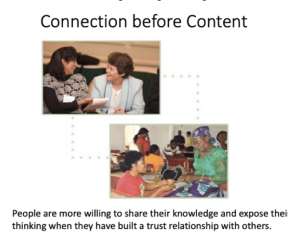Ten Big Ideas of Knowledge Management
Conversation Matters
AUGUST 31, 2020
People are more willing to share their knowledge and expose their thinking when they have built a trust relationship with others. Circles Connect (applicable when the virus is over and we are again able to meet in person). A circle represents equality - there is no “head of the table.” Circles represent unity.




























Let's personalize your content